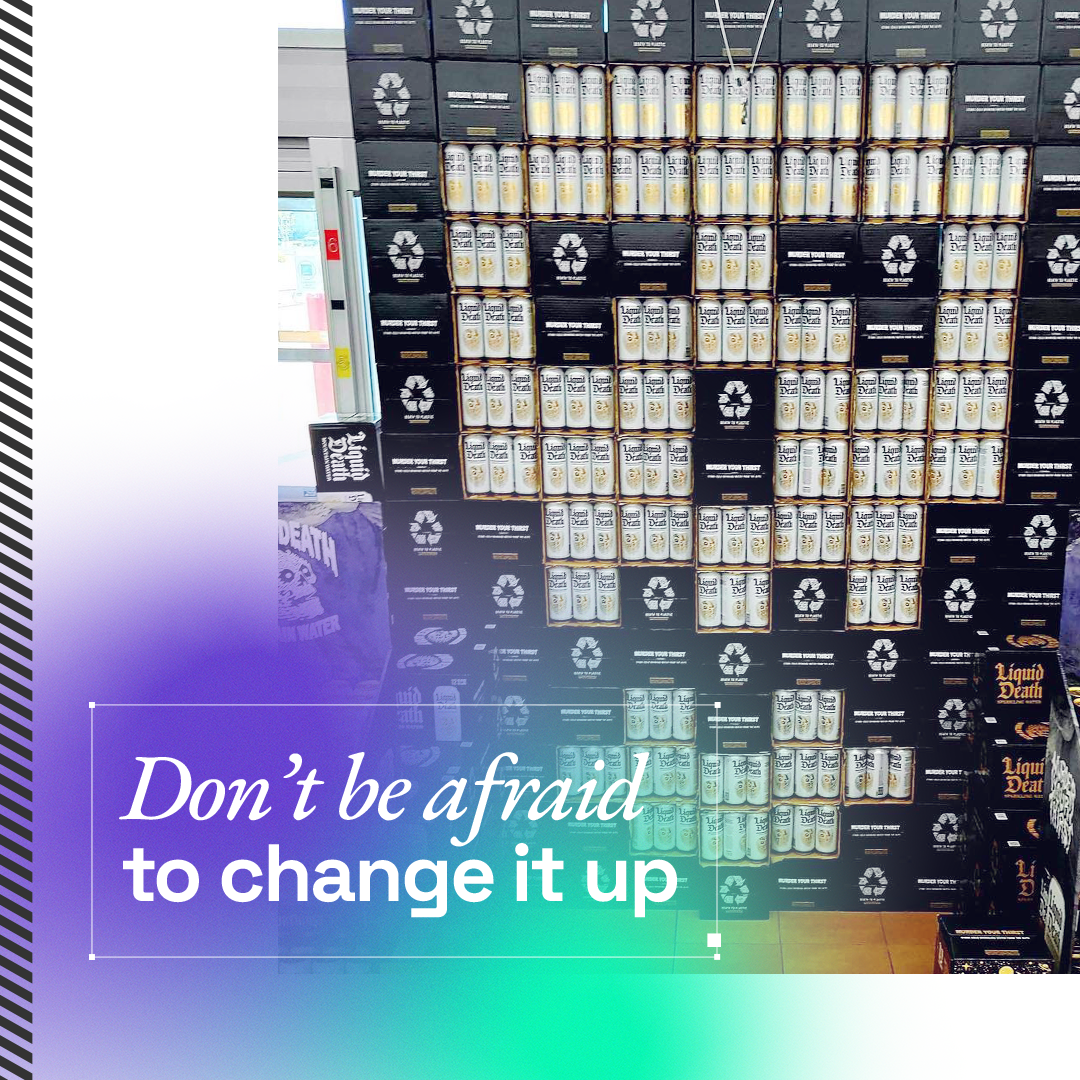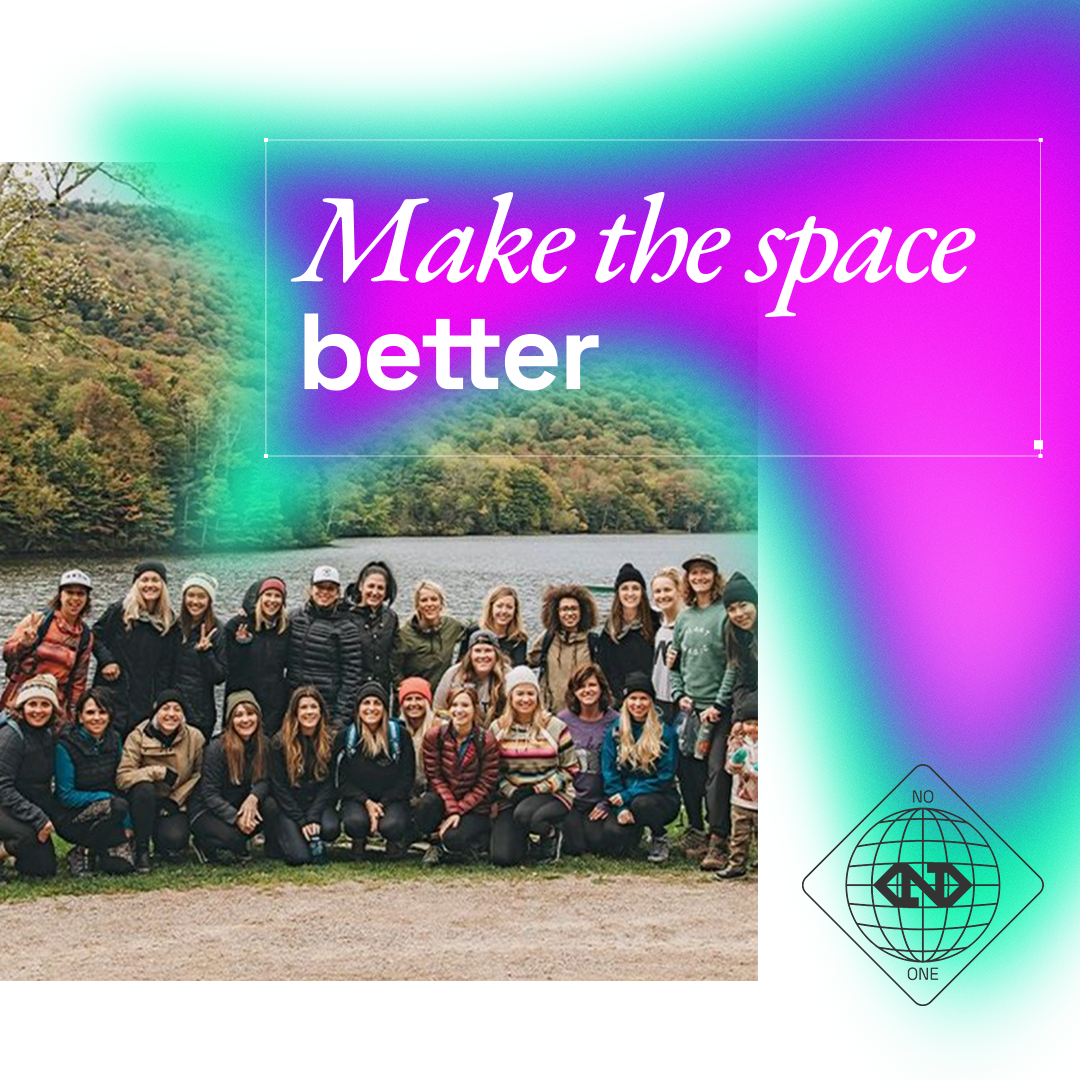What deviants can teach your well-managed corporate brand
Your brand's point of view is a series of cost-efficient assets and sales promotions served via pop-up. Your marketing strategy feeds the funnel-converting machine with campaigns—optimized around opt-in requests and acronymeasurables like CTR, ROAS, and NPS—that are about reducing risk vs. creating emotional lift. Best practices over big ideas. Consistency and consensus over wild creativity. Predictability = stability, and keeping the corporate vessel from rocking keeps the stakeholders from mutiny.
Your retargeting emails, review requests, and loyalty program incentivization tiers may be providing the short-term drip of data dopamine, but what does performance marketing do for your brand in the long run? How different is your carefully engineered product/service/brand/message from competitors? Is there a palpable sense of purpose behind it?
Unfortunately, there is no conversion metric for creating a cult following, but a group of underdogs, outcasts and rebels cracked the code long ago. By bucking the rules and creating an authentic space for outsiders to participate, “action sports”, aka surfing, skateboarding, snowboarding and BMX broke the mold and invented new ways to market. By following the principles of ingenuity, independence and originality, they welcomed brand fans for life. Fans that over time helped raise and elevate these lifestyle categories and brands to unprecedented heights.
Here’s what your brand can learn from how these outsiders got things done.
Liquid Death broke through the bottled water category with outrageous and counterintuitive ideas, starting with the name of the brand itself.
Traditional sports are played on courts and fields designed to be equal. There's rules and officials, clocks and scoreboards. Even the uniforms are, well, uniform. The goal of these tightly regulated team sports is consistency and fairness in competition.
Action sports were born from a different approach; they didn't start as “sports” at all, they were activities and weird pursuits created by outsiders. Formed in the fringes, where the wild things grow, fueled by ideas like individuality and creativity over top-down systems, official rules and teams competing.
At the heart of these scenes, there's an understanding that change is essential. Boundaries are meant to be broken, and new "firsts" happen every day, even decades after the origins. This state of constant progress helps foster new ideas and keep things fresh.
The takeaway:
Change comes from the outside. Instead of hiring the obvious choice—the person or team that has expertise in your field—be brave enough to think different, look outside what you know and disrupt the accepted ways of thinking. Invite outsiders who are not focused on your category to see the landscape with fresh eyes, and experiment with unconventional ideas that break the norms. Look no further than what Liquid Death has done to the beverage industry for an example of how change can be a powerful lever.
BMX icon Mat Hoffman brought countless innovative ideas to action sports, including the category of big air ramp riding. His creative approach is rooted in independent, do-it-yourself experimentation.
The foundations of different action sports also share similar origin stories—a teenager putting on the first grassroots event, a business formed in a garage, a dreamer with a prototype convincing a local shop to test out sales. They lack an established path of how to do it "the right way" and instead unlock the independent mindset superpowers: Intuition needs to be sharp. Utility and purpose are baked into everything. There's a closeness to the innovation process. Failing is celebrated as part of the journey.
The takeaway:
Don't outsource steps that create deeper connections, from product innovation to marketing. Invent the tools and tactics that are tuned to your specific needs. Create situations where you will inevitably fail, learn, and evolve.
Mammoth Mountain started as a single tow rope in the wilderness of the Eastern Sierras, attracting a handful of visitors on weekends. To grow, they established a mountain operations warehouse on site—part garage, part machine shop where they can fix and modify heavy construction equipment and snow vehicles to suit their unique needs. This is where they build and repair chair lifts and gondolas, deal with 700 inches of snowfall a season, how they open up new trails on the mountain, make their own snow park obstacles, and welcome 50,000+ visitors a day.
Outdoor brand Patagonia brings messages of purpose across every touchpoint, right down to the details like the back of tags sewn into their products.
Action sports place a high value on small details. It's not just the mechanics of pulling off a trick, it's a matter of self-expression and style. Design matters—not just how something works but how it looks, feels, and fits within the nuanced principles and codes of etiquette. Style is integral, and brands are built to support the weird, the wild, the clean and the crisp with equal respect.
The takeaway:
When you show up, how you show up, and where you show up are important. Think through the details, and find ways to express your brand's persona and ideas. This is the time to bring in an expert to make sure what you present to the world is authentic in all its forms.
Skateboarding has a long history of creating provocative content. Lakai's landmark Fully Flared project featured pyrotechnics and special effects from filmmaker Spike Jonze, bringing stunning skate sequences to life amidst beautiful chaos.
Today there's an endless stream of Go Pro POV footage and stuntastic energy drink edits, but even in the earliest days of action, there was a need to document the doings. Coverage captured the big personalities, legendary locations and visceral action. And just like the creativity of the participants, the storytelling tactics embrace experimentation, taking risks, and strive for progression.
The takeaway:
Work with visual storytellers to find creative ways to express your brand's point of view. Build a cadence between everyday content and bigger statement pieces. Participation over perfection, the content doesn’t have to be perfect, but it does have to elicit an action or emotion.
Burton has led the industry in paving the way for women in sport. From equal pay to supporting female athletes after childbirth, Burton continues to push for equality and making space for everyone who wants to participate, no matter where they are on their personal journey.
What started out as small scenes have grown into global, multi-generational lifestyle sports. The best brands in action have always put purpose forward, embracing a spirit of collective progression over competition. Skateboarding is better because of Vans supporting a large and diverse team roster, and ideas like the Warped Tour or the Dogtown and Z Boys documentary. Snowboarding is better because of Burton's work to get ski resorts to accept snowboarding.
The takeaway:
Focus on the role your brand plays in the larger ecosystem. Invest in places to participate. Support the temples of enthusiasm. Invest in the new generation of boundary breakers.
Want more? Nemo has extensive history helping lift action sports brands from back alley antics to Olympics level stardom. And we bring what we’ve learned from these partnerships to help brands large and small break through the clutter.
Disruption starts by questioning the status quo. Here are 12 areas to help you look deeper and create a breakthrough.






